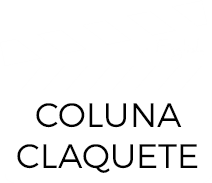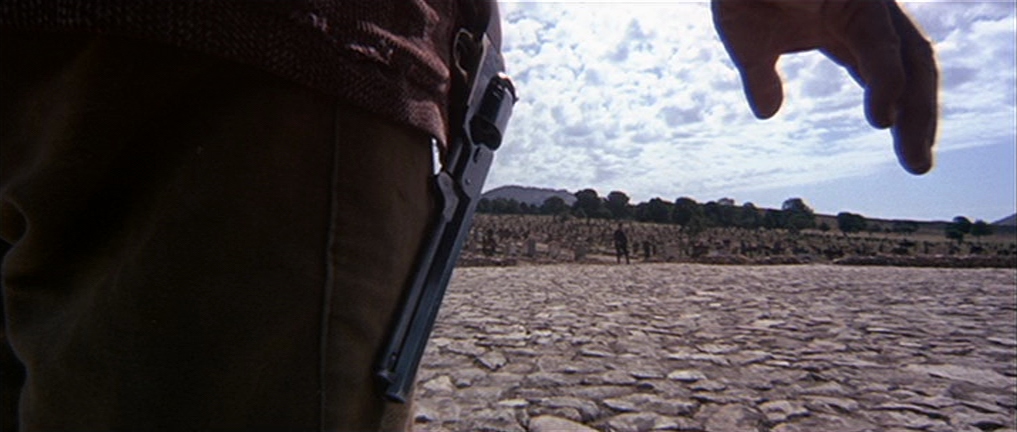Movie of the week: “The Good, the Bad and the Ugly”
Hamburger with spaghetti taste
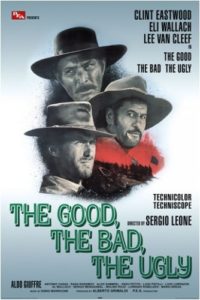 One of the most constant figures in the popular imaginary in any corner of the world is the American cowboy.The genre has produced films with great diversity of actors as Tom Mix, Gary Cooper, Roy Rogers, Alan Ladd, Randolph Scott, Gregory Peck, and the legendary association of the two Johns, Ford and Wayne.Other actors and characters would forever change the genre, with films like “The Good, the Bad and the Ugly” of 1966.
One of the most constant figures in the popular imaginary in any corner of the world is the American cowboy.The genre has produced films with great diversity of actors as Tom Mix, Gary Cooper, Roy Rogers, Alan Ladd, Randolph Scott, Gregory Peck, and the legendary association of the two Johns, Ford and Wayne.Other actors and characters would forever change the genre, with films like “The Good, the Bad and the Ugly” of 1966.
Curiously, the transfiguration of cowboys to the screens until the early 1960s had always shown a romantic image, with clean, neat, elegant characters who never did anything wrong, the perfect “clean” hero.
It was necessary to appear a daring Italian, to materialize the western on a much real scale of reality, that provoked a true revolution in the film industry between the sixties and seventies: the spaghetti western.Despite the pejorative term (spaghetti western), the movement initiated by the genial Italian director Sérgio Leone unleashed an avalanche of about two hundred similar productions, revitalizing the genre.
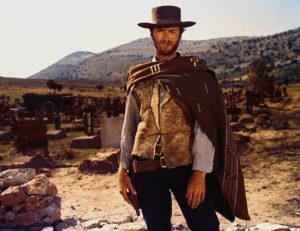 The trilogy that inaugurated the cycle was “A Fistful of dollars” (a remake of “Yojimbo” by Kurosawa), “For a few dollars more”, and, “The Good, the Bad and the Ugly”, the latter, object of this review.
The trilogy that inaugurated the cycle was “A Fistful of dollars” (a remake of “Yojimbo” by Kurosawa), “For a few dollars more”, and, “The Good, the Bad and the Ugly”, the latter, object of this review.
The obvious question is: what difference did these films present, in relation to so many others done previously? We have just to imagine what was the real appearance of one of the Old West American heroes. Rude men, used to spending long periods of solitude in the meadows, forests or deserts, accustomed to face difficulties so diverse as snake bites, Indian attacks, hunger, thirst, battles, truculent sheriffs, ambitious farmers, etc.Fun? Drinks, of the worst possible quality, prostitutes full of diseases, and card games or dices.Point for Leone, hors concours.
But it is not only in appearance that the characters of Leone are more plausibles. The people portrayed in his films are full of flaws and qualities – like any human being – and not that traditional dichotomy of good guy and evil villain. There are no archetypes, the main characters are sand of the same bag, although they have different characteristics.
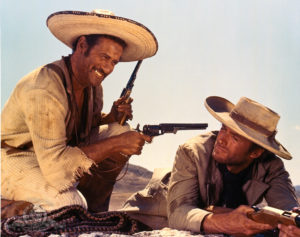 The title in English follows the obvious (“The Good, the Bad and the Ugly”), but the original goes straight to the characterization of the characters: “Il Buono, il Bruto, il Captivo”, the good, the bad and the captive. The Captive is Tuco (Eli Wallach), a Mexican out of misery for banditry, with a criminal record that went from murder to abandonment of home. He is ambitious, vindictive, lying, and cruel, although he has feelings of family and friendship, like every human being.
The title in English follows the obvious (“The Good, the Bad and the Ugly”), but the original goes straight to the characterization of the characters: “Il Buono, il Bruto, il Captivo”, the good, the bad and the captive. The Captive is Tuco (Eli Wallach), a Mexican out of misery for banditry, with a criminal record that went from murder to abandonment of home. He is ambitious, vindictive, lying, and cruel, although he has feelings of family and friendship, like every human being.
The Bad is Angel Eyes (Sentenza, in the original Italian, lived by Lee Van Cleef), a fixed-price assassin, that boasted of always fulfilling the “works” that he assumes. Unlike Tuco, who was passionate, Angel Eyes would kill for duty, torture to get what he needed, and co-opt when he saw that it was necessary. At no time he did lose his temper, or fell in despair.
The Good is Blondie (Clint Eastwood), a small-time swindler with good aim, who lived in partnership with Tuco, snatching money from sheriffs from small towns.
 What these very different men had in common was the secret of a Confederate treasure buried in a southern cemetery. Throughout the movie, they alternate in the domination of the others, in order to extract the exact location of the treasure.
What these very different men had in common was the secret of a Confederate treasure buried in a southern cemetery. Throughout the movie, they alternate in the domination of the others, in order to extract the exact location of the treasure.
If the story is simple, in the transformation into a film is that you can see the genius of Leone, who used techniques and camera movements very daring, coupled with an exceptional soundtrack, none other than Enio Morricone, one of the biggest names in music in the movies.
Some sequences of the film are anthological, like the triple duel in the cemetery. The image moves from faces and hands of the duelists, coupled with the stunning background music, is impressive. Another strange and fascinating scene is when Tuco goes through the cemetery, looking for the correct grave.The camera’s amazing rhythm can translate all of the character’s emotion and anxiety.
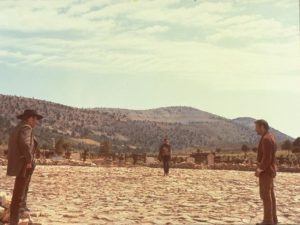 One idea that came to mind (and that is as valid as any other is that the three characters, in fact, are sides of the same triangle, different faces of the same human condition. We all have the Tuco side, which is concerned with the elementary needs (eating, sleeping, warming up, having fun, etc.). At the same time, the society in which we live today stimulates the Angel-Eye’s side, as it puts competitiveness above all else. It is our greedy side, which has to take advantage of everything, fulfilling the old maxim that the ends justify the means. Finally, there is our idealistic and ethical side, which counterbalances the other two, which is represented by Blondie. Perhaps the “journey” was great in this reading, but Leone shows his optimistic outlook by defeating the darker side of the triangle.
One idea that came to mind (and that is as valid as any other is that the three characters, in fact, are sides of the same triangle, different faces of the same human condition. We all have the Tuco side, which is concerned with the elementary needs (eating, sleeping, warming up, having fun, etc.). At the same time, the society in which we live today stimulates the Angel-Eye’s side, as it puts competitiveness above all else. It is our greedy side, which has to take advantage of everything, fulfilling the old maxim that the ends justify the means. Finally, there is our idealistic and ethical side, which counterbalances the other two, which is represented by Blondie. Perhaps the “journey” was great in this reading, but Leone shows his optimistic outlook by defeating the darker side of the triangle.
The film has the support of the actors, all excellent, still early in their careers. Clint Eastwood, who achieved more success, had came from a few small TV sitcoms and agreed to participate in “For a Fistful of Dollars” for $ 15,000. This film was the great turning point in his career, projecting him as one of the great names of American cinema.
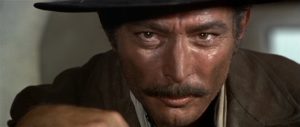 Lee Van Cleef repeated his performance in numerous other spaghetti western films, but did not have the same success as Eastwood. Eli Wallach, the Tuco, has developed a remarkable career in American television. A curiosity about the latter was the refusal of a role in “From Here To Eternity” with which Frank Sinatra would win an Oscar.
Lee Van Cleef repeated his performance in numerous other spaghetti western films, but did not have the same success as Eastwood. Eli Wallach, the Tuco, has developed a remarkable career in American television. A curiosity about the latter was the refusal of a role in “From Here To Eternity” with which Frank Sinatra would win an Oscar.
Special attention should be given to the soundtrack of this film, signed by Ennio Morricone himself. This movie theme music became practically the hallmark of the Western in cinema, even though most people have no idea what movie it was. Morricone is the most productive film composer, alongside Maurice Jarre. His tracks include “The Antichrist”, “1900”, “La Luna”, “The Untouchables”, “Tie Me Up! Tie Me Down!”, and the wonderful “Cinema Paradiso,” among nearly four hundred titles on IMDB’s website.
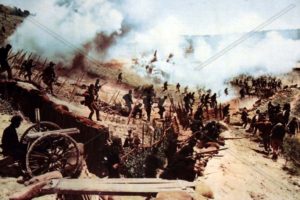 The Latin edition in Blu-Ray brought the film in widescreen, and in the Extras, Bio-fimografia, Posters, Sttil Photos, Trailers, Trivia game with note, Deleted Scenes, The Man Who Lost the Civil War, and Rebuilding The Good, Evil and The Ugly. The seven deleted scenes raise the total movie time to 176 minutes. The screen format for this movie could not be other than the widescreen. The overwhelming panoramas, the exaggerated closes, and the fantastic frame of Leone would simply disappear when panning to fill the TV screen. This was one of the few movies that was released widescreen on VHS, generating many claims, similar to those of the first DVD users, who were used to the VCR full screen format. The sound is provided in English, Spanish, Portuguese and French 5.1, and Italian 2.0, which favors the excellent soundtrack.
The Latin edition in Blu-Ray brought the film in widescreen, and in the Extras, Bio-fimografia, Posters, Sttil Photos, Trailers, Trivia game with note, Deleted Scenes, The Man Who Lost the Civil War, and Rebuilding The Good, Evil and The Ugly. The seven deleted scenes raise the total movie time to 176 minutes. The screen format for this movie could not be other than the widescreen. The overwhelming panoramas, the exaggerated closes, and the fantastic frame of Leone would simply disappear when panning to fill the TV screen. This was one of the few movies that was released widescreen on VHS, generating many claims, similar to those of the first DVD users, who were used to the VCR full screen format. The sound is provided in English, Spanish, Portuguese and French 5.1, and Italian 2.0, which favors the excellent soundtrack.
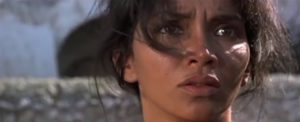 “The Good, the Bad and the Ugly” is a film that interests westerners, Eastwood fans, film scholars, lovers of good music, or just who wants to enjoy a good action movie. Other readings can be made, depending on how you look at the film. Try it, and make yours.
“The Good, the Bad and the Ugly” is a film that interests westerners, Eastwood fans, film scholars, lovers of good music, or just who wants to enjoy a good action movie. Other readings can be made, depending on how you look at the film. Try it, and make yours.
Original Title: “Il buono, il brutto, il cattivo”
